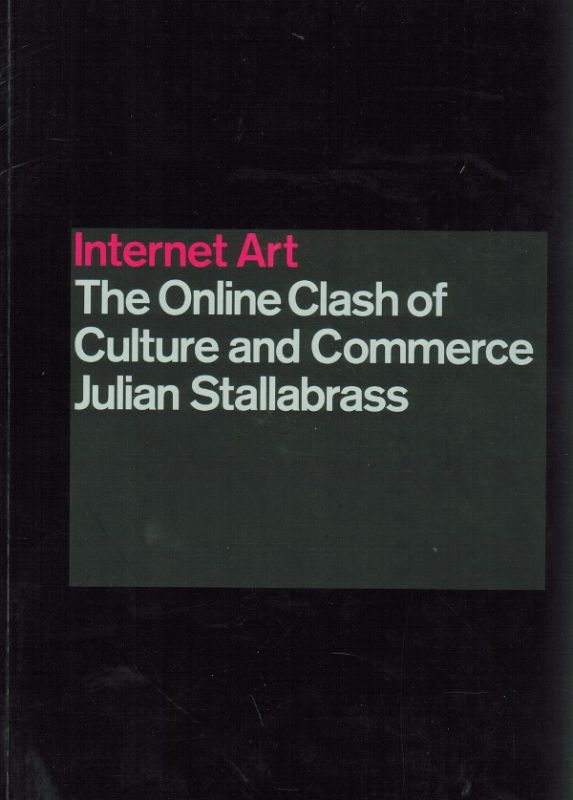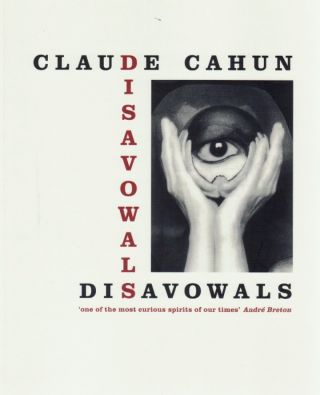
Internet Art
availability unknown, if interested please write an email
In his book, Julian Stallabrass attempts to map the socio-political context that has given rise to artistic projects designed for the Internet and categorized today as Net.art. The practices commented on by the author began appearing as the Web was developing the hybrid form we know today. Stallabrass believes that the dissipation of the Internet’s utopian potential and its evolution toward a sphere that is increasingly dominated by commercial trade invalidate the very idea of an independent history of Net.art and its definition as a medium. Hence, Stallabrass gives equal attention to the cultural issues raised by the Internet in an advanced stage of capitalism and to artistic practices.
In the first chapter, “The structure of the Internet,” Stallabrass describes the Internet as an evolving platform. He comments on projects that, at the Web’s very beginnings, attempted to visualize its structure and to grasp the type of information passing through it (I/O/D, Web Stalker, 1997). The second chapter, “The form of data,” looks at the way artists use and organize data on the Web. Stallabrass notes a first trend in projects that compile, structure and distribute resources (often already accessible on-line) via databases (Antonio Muntadas, The File Room, 1995). The second trend, which occurred particularly during the Internet’s early days, considers the code as a medium and explores means of display beyond commercial interfaces (Vuc Cosic, Jodi). The third chapter, Time as space, Space as art, probes the presuppositions of the Web’s democracy. Stallabrass shows that artists in the Web’s early years challenged the Internet’s communicational efficiency by examining the slowness of file downloads (Brighid Lowe, Now Here, Nowhere, 1998) and the effacement of on-line content (Thomson and Craighead, Pet pages, 1998). Though certain utopians liken the Web to a vast network where the access to information is decompartmentalized, Stallabrass argues (statistics in hand) that the Internet is now dominated by a privileged class, neglecting a share of its potential users. Paradoxically, Stallabrass notes that alternative pockets (he cites the artistic practices developed in Eastern Europe) have withstood this form of hegemony. The fourth chapter, Interactivity, relativizes this concept as presented in the discourse of Net.art. Stallabrass comments on projects that truly nurture the participative dimension (Douglas Davies, The World’s First Collaborative Sentence, 1994). The fifth chapter, “The rise of commerce,” reveals the change that gradually took place on the Web as corporations set up digital windows, creating a vast arena of commercial transactions. According to Stallabrass, this economic order (compromised by the recent stock market woes of new technologies) has drastically changed the structure of the Internet where providing access to network space (through domain names, for instance) is a money-making endeavour. The projects examined here appropriate the rhetoric of these on-line storefronts by revealing the desires they elicit in consumers (Tomoko Takahashi, Alexei Schulgin, Rachel Baker). The sixth chapter, “Politics and art,” continues the reflection begun in the previous chapter, outlining the strategies artists adopt to assure their project’s impact on the social sphere (Heath Bunting, Mongrel, Rtmark and Etoy). Stallabrass zeroes in on the case of Etoy. This artist collective, accused of identity fraud by an on-line retailer called Etoys, took advantage of the lawsuit to denounce the stronghold such companies have on Web content. The seventh chapter, “Free from exchange,” provides food for thought on the sharing of software and platforms for on-line exchanges. Stallabrass underlines the role these platforms (especially Nettime) played in creating a discourse on Net.art at a time when on-line practices were emerging. In the eighth chapter, “The art institutions,” Stallabrass addresses the issue of distributing and exhibiting Net.art in an institutional context. In his opinion, museums and other art centres have often sought to shape these practices in accordance with their conservation and exhibition criteria without considering the fact that the context in which Net.art occurs is the Web itself. He describes the solutions (generally disappointing) developed by the museums that exhibit Web art and then specifies the warnings that artists formulate at the same time to avoid (and, in some cases, note) the reification of their practices (Natalie Bookchin, Shulgin, Blank and Jeron, Introduction to Net.art, 1994-1999). Finally, the last chapter, “Art, intelligent machines and conversation,” re-examines issues covered in previous chapters, such as the need to define the aim of projects designed for the Internet. According to the author, this aim depends on the theoretical discourse that accompanies the practices (to this end, he evokes the rhetoric of a certain postmodernism that is opposed to ambient technological evangelism). Stallabrass concludes by reflecting on the issues raised by intelligent environments on the Internet, which he sees as an avenue for helping upgrade the processes for generating and grasping information.




